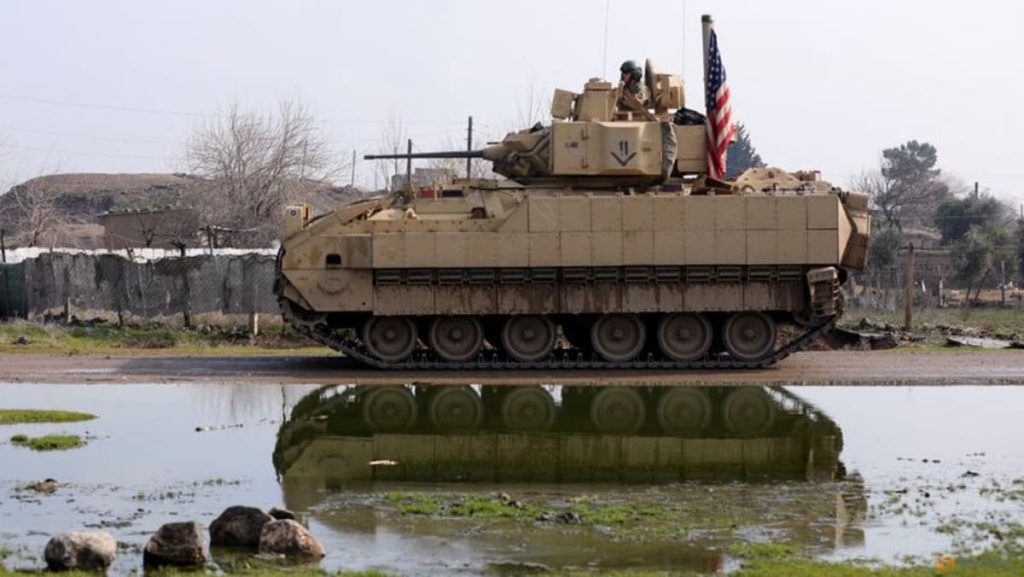The ongoing Syrian conflict presents a complex and evolving geopolitical landscape, marked by power shifts, ideological clashes, and humanitarian concerns. The recent overthrow of the Assad dynasty, a regime notorious for its brutal 50-year reign, has ushered in a new era of uncertainty, leaving the international community grappling with the implications of this dramatic change. At the forefront of this intricate situation is the United States, whose military presence in Syria has taken on a renewed significance as it seeks to navigate the volatile post-Assad environment. Washington’s strategic calculus is now focused on mitigating potential instability and safeguarding its interests in the region, even as the future trajectory of Syria’s governance remains shrouded in ambiguity. The United States’ approach is characterized by a cautious optimism tempered by a pragmatic assessment of the ground realities.
A central element of the US strategy is the continued designation of Hayat Tahrir al-Sham (HTS) as a terrorist organization. This Sunni Muslim militant group played a pivotal role in the rebellion that ultimately toppled the Assad regime. Despite the group’s contribution to the overthrow of a repressive regime, the US government remains steadfast in its classification of HTS as a terrorist entity. This stance underscores a critical aspect of the US counter-terrorism policy: designations are based on demonstrable actions and not merely on pronouncements or declared intentions. The US government emphasizes the need for tangible evidence of a genuine commitment to peaceful and inclusive governance before reconsidering its position on HTS. This approach reflects a commitment to holding groups accountable for their actions, regardless of their political rhetoric or stated objectives.
While maintaining a firm stance against designated terrorist groups, the US government acknowledges the evolving political landscape in Syria and the potential for positive change. Recent statements from some of these groups, characterized by the US as “quite constructive,” suggest a possible shift towards more inclusive and democratic governance. However, the Biden administration emphasizes the importance of actions matching words. The US government is closely monitoring the situation on the ground, waiting for concrete evidence of a genuine commitment to credible and inclusive governance before adjusting its policies. This cautious approach reflects a recognition of the complexities of the Syrian conflict and the potential for manipulative tactics by various actors.
The transition of power in the United States adds another layer of complexity to the Syrian situation. As the Biden administration prepares to hand over the reins to the incoming Trump administration, maintaining open communication and ensuring a smooth transition of policy is paramount. Regular briefings and consultations are taking place to keep the incoming team abreast of developments in Syria and the US government’s ongoing efforts to promote stability and address the humanitarian crisis. This collaborative approach is crucial for ensuring continuity in US foreign policy and avoiding any disruptions that could exacerbate the already volatile situation in Syria. The shared understanding of the challenges and opportunities in Syria is essential for effective policymaking and achieving long-term US objectives in the region.
The US approach to the Syrian crisis is multifaceted, balancing security concerns with the imperative of promoting a peaceful and democratic transition. The continued military presence serves as a deterrent against further instability, while simultaneously providing support for humanitarian efforts and facilitating political dialogue. The US government recognizes the delicate balance between maintaining pressure on extremist groups and engaging with potential partners for peace. This nuanced approach reflects a commitment to finding a sustainable solution to the Syrian conflict that addresses both the immediate security challenges and the long-term aspirations of the Syrian people.
In essence, the US strategy in Syria is predicated on a combination of vigilance, pragmatism, and cautious optimism. While maintaining a firm stance against terrorism, the US government remains open to the possibility of positive change and is actively engaged in efforts to promote a more stable and inclusive future for Syria. The transition of power in Washington adds a further layer of complexity, but the commitment to maintaining open communication and ensuring policy continuity underscores the importance the US places on achieving a peaceful resolution to the Syrian conflict. The US military presence, coupled with diplomatic efforts and humanitarian assistance, represents a comprehensive approach aimed at mitigating instability, fostering dialogue, and ultimately contributing to a more peaceful and democratic Syria. The path forward remains uncertain, but the US government’s commitment to navigating this complex landscape with prudence and resolve underscores its dedication to finding a sustainable solution to this protracted conflict.

